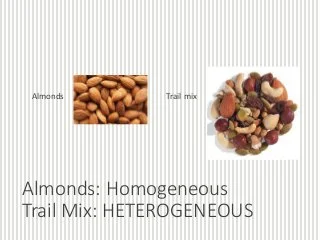Seeds can be either homogeneous or heterogeneous. Heterogeneous seeds have a greater chance of producing a variety of plants, while homogeneous seeds are more likely to produce a single type of plant. There are pros and cons to both types of seeds.
Science Quiz: Homogeneous or Heterogeneous Mixtures – Part 1 | ANY 10
The Different Types of Seeds
There are many different types of seeds and each has its own unique function in the plant world. Seeds can be either homogeneous or heterogeneous.
Homogeneous seeds are those that are the same throughout. Heterogeneous seeds are those that vary in some way from one another.
Homogeneous seeds are the most common type and are found in most plants. They are uniform in shape, size, and color and are the base for most plants.
Heterogeneous seeds are found in a few plants and are the basis for many new varieties of plants. They can be any shape, size, color, or variety and are the foundation for new plant varieties.
The Benefits of Planting Seeds
There are many benefits to planting seeds, both homogeneous and heterogeneous.
When seeds are planted in soil, they germinate and grow, eventually leading to a new plant. Planting seeds is a way to create something new, which can be seen as a form of creativity.
There are also many benefits to planting seeds of different varieties. For example, if you plant a variety of corn, the corn plants will be different in size, color, and flavor. This can result in a more diverse harvest, which is especially important in a food-centric society.
Finally, planting seeds can preserve biodiversity. By planting different types of seeds, you are creating a community of plants that can interact with one another and create new varieties. This is important for the survival of our planet, as it helps to keep the planet’s ecosystems healthy.
The Best Way to Plant Seeds
We all know that planting seeds is a vital part of gardening, right? But how do you choose which seeds to plant?
One option is to plant seeds homogeneous, which means planting them all in the same type of soil. This can be a good way to ensure that the plants get a good start, but it can also lead to them not thriving in different environments.
Another option is to plant seeds heterogeneous, which means planting them in different types of soil and in different locations. This can help the plants adapt to their surroundings and find the resources they need to grow.
But what about mixed species gardens?
Mixed species gardens are a great way to combine the benefits of both homogeneous and heterogeneous planting. This way, you can plant a variety of different types of plants in one garden, and you can also experiment with different types of soil to see what works best for each plant.
Also Read:- No Profile Picture on FB | Get More Friends
The Different Ways to Plant Seeds
There are two ways to plant a seed: homogeneous and heterogeneous. Homogeneous planting means planting the seed all at once in the same spot, while heterogeneous planting means planting the seed in various spots around the area.
The main reason to plant seeds heterogeneously is that it allows the seed to grow in a variety of different soils and climates, which can lead to a more successful plant. Additionally, it allows the plant to compete with other plants for nutrients and sunlight, which can lead to a better crop.

When choosing to plant seeds heterogeneously, it is important to consider the variety of seeds you are planting. Some plants, like peas, are better planted in a homogeneous area because they are not as resilient to the environment if they are planted in a variety of soils. Other plants, like corn, are better planted in a heterogeneous area because they are more resilient to the environment.
Overall, it is important to experiment with planting seeds heterogeneously to see what works best for your plants and area.
Why Planting Seeds is Important
Planting seeds is a critical step in the process of growing plants. The seeds contain the genetic information required to grow a new plant and they are placed in the soil to begin the process of growing.
The seed’s seeds contain the genetic information necessary to grow a new plant. Once planted, the seed’s roots will spread out and search for water and nutrients. The seed will also send out shoots and roots to collect these essential elements. Over time, the plant will grow and produce new leaves, flowers, and fruit.
Conclusion
Seeds are either uniformly heterogeneous or homogeneous. Uniformly heterogeneous seeds have a greater number of small seeds distributed throughout the seed. Heterogeneous seeds have many large seeds located in one location.



